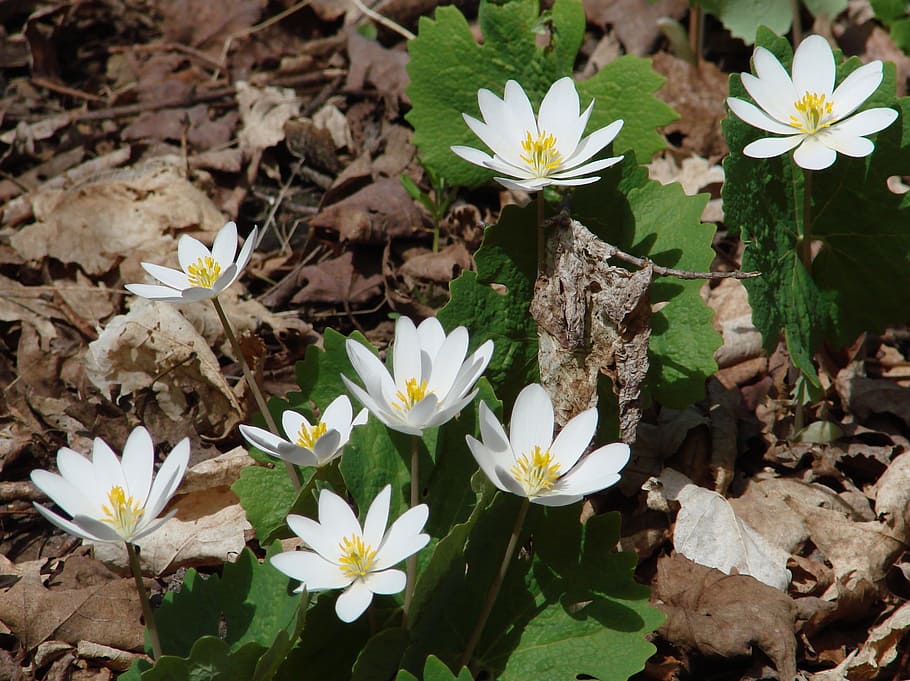Bloodroot (Sanguinaria canadensis) is a unique, native woodland plant found across the eastern North American region. Known for its delicate white blooms and the distinctive reddish-orange sap from which it gets its name, bloodroot plays a crucial role in its ecosystem and offers intriguing historical and medicinal implications. This article takes an in-depth look at bloodroot, exploring its botanical characteristics, ecological role, historical uses, and cultivation.
Botanical Characteristics
Bloodroot is a perennial plant that typically grows up to 6-9 inches in height. It’s most easily identified by its singular lobed leaf and the delicate, white, eight-to-twelve petaled flower that blooms in early spring. The plant’s common and scientific names refer to the red sap that oozes from the stem and roots when they’re cut.
Ecological Role
Bloodroot plays a significant role in early spring pollination. It is one of the first plants to bloom in the spring, offering an essential nectar source for pollinators. This early flowering also helps it get sunlight in the forest understory before larger trees and shrubs leaf out and create shade. Furthermore, bloodroot is part of a fascinating symbiotic relationship with ants known as myrmecochory, in which ants disperse the plant’s seeds, aiding its propagation.
Historical and Medicinal Uses
Bloodroot has a long history of use by Native American tribes for its dye and medicinal properties. The plant’s red sap was used as a dye for textiles, and as a body paint. Medicinally, it was used topically to treat skin conditions and taken internally for respiratory and rheumatic ailments.
In modern times, bloodroot is still used in some natural skin treatments, and the alkaloid compound sanguinarine, derived from the plant, has been studied for its potential antimicrobial and anti-inflammatory properties. However, use of bloodroot for medicinal purposes can be risky due to its toxic nature and should only be undertaken under professional guidance.
Cultivation of Bloodroot
Growing bloodroot in a home garden can add a burst of early spring color and support local pollinators. It thrives in well-drained, humus-rich soil in partial to full shade. Bloodroot is typically propagated by seed or by dividing the rhizome.
When planting, it’s crucial to take the plant’s natural woodland habitat into account. As an understory plant, it prefers shaded locations with rich, organic soil. Watering should aim to replicate the moist conditions of its natural habitat, but avoid waterlogging which could cause rot.
Bloodroot is a fascinating plant with a significant ecological role and an intriguing historical profile. Its beautiful spring flowers can brighten up shady spots in a native plant garden and its various unique characteristics make it a topic of interest for botanists, gardeners, and history enthusiasts alike. As with any wild plant, conservation is crucial, and any cultivation or use of bloodroot should prioritize the health and sustainability of wild populations.
